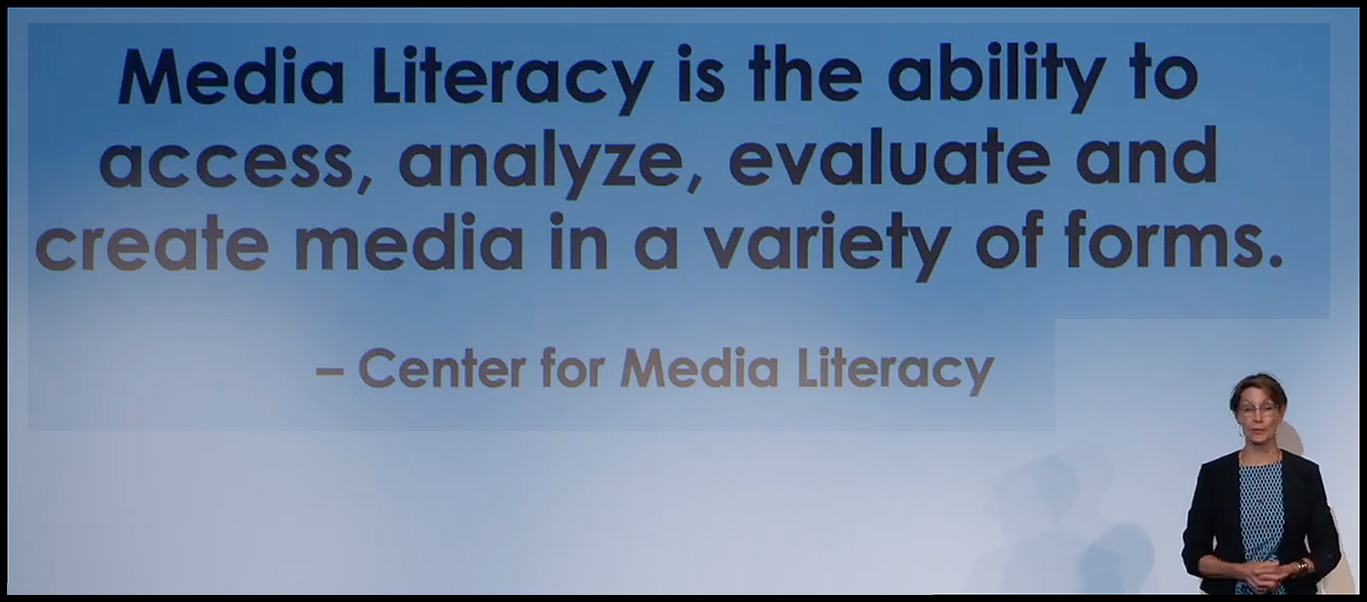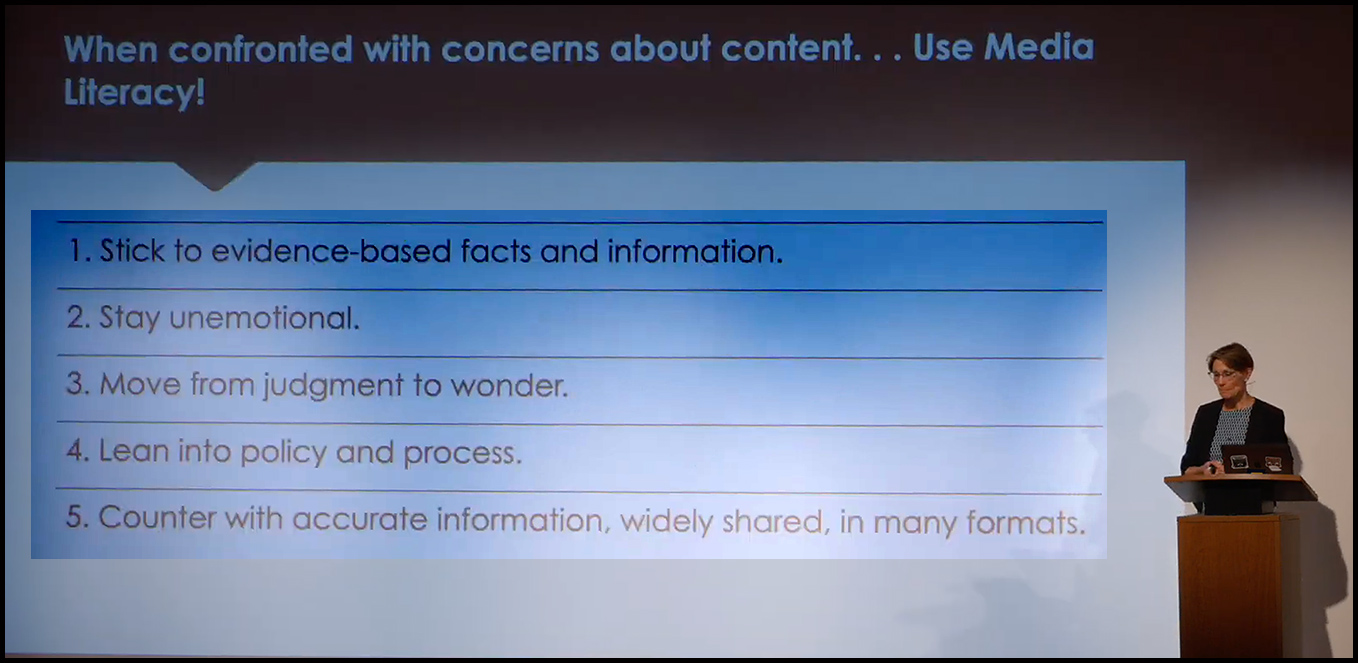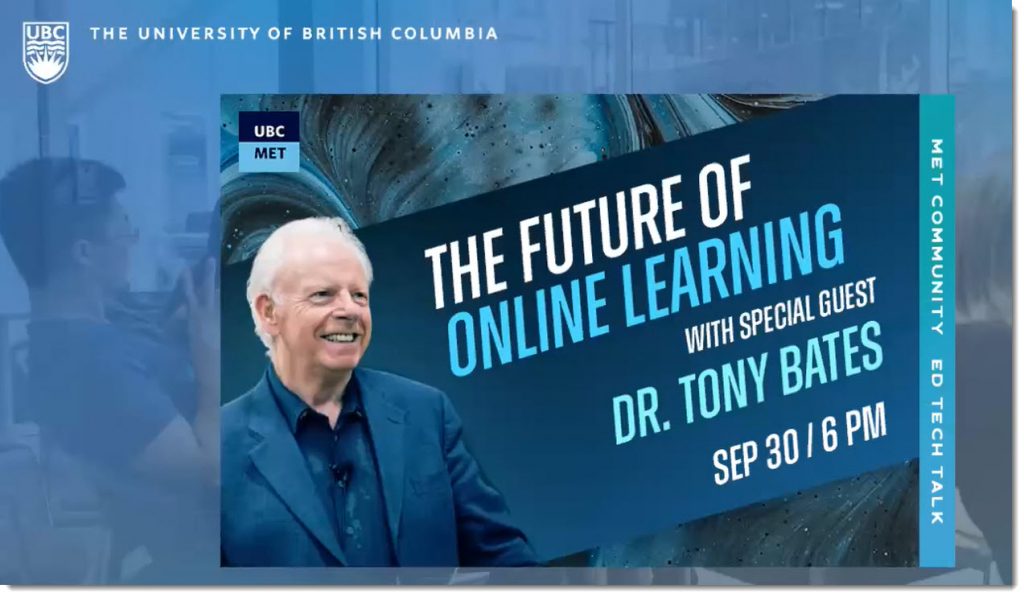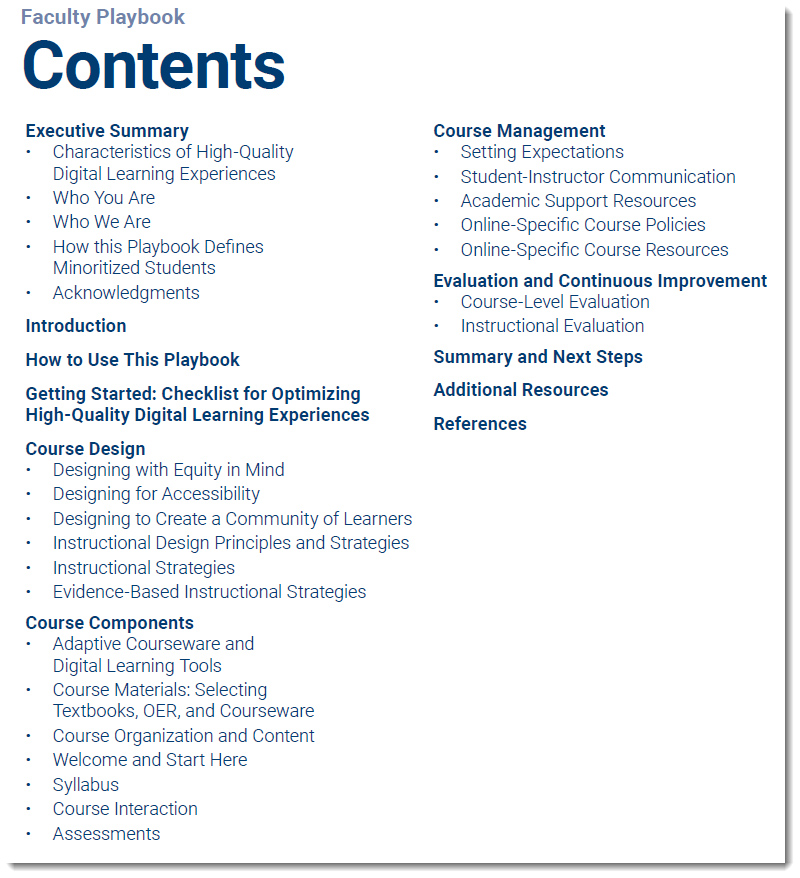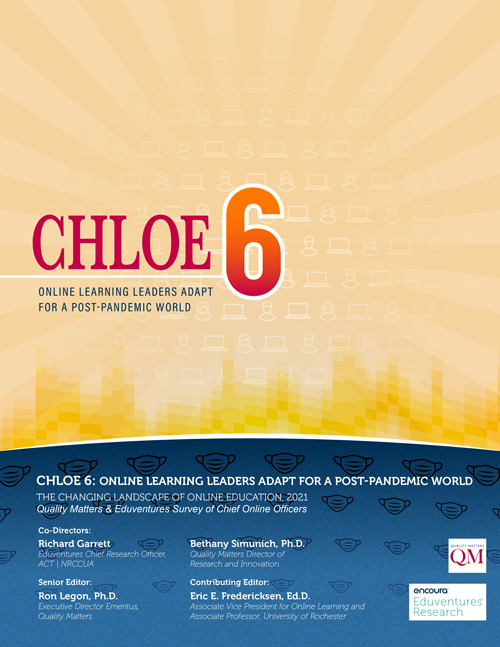“eLearning has a problem, and it’s not AI.” — from linkedin.com by Dr. Heidi Kirby
.
The Real Deal — from workshift.org
A series exploring what we know about the quality of nondegree credentials.
The above link/page includes the posting:
Understanding Influencers in the World of Nondegree Credentials — by Michelle Van Noy and Tom Hilliard
There’s no single arbiter of nondegree quality, but rather a host of “quality influencers” who seek to shape the market.
They respond to needs that the degree-credit system has not efficiently met: quick start-up, shorter sequences, relationships with third-party credential issuers, real-time employer engagement, and so on. The complexity of the needs of the market and of learners has led to a proliferation of diverse credentials, and a landscape that continues to evolve in surprising directions.
Amid this complexity, there’s no one single arbiter of quality but rather a host of “quality influencers” who seek to shape the market in different ways. Exploring who those influencers are, how they approach their work, and what they seek to accomplish is essential to understanding what quality means for noncredit credentials—and what could happen in years to come.
12 Books for Instructional Designers to Read This Year — from theelearningcoach.com by Connie Malamed
Over the past year, many excellent and resourceful books have crossed my desk or Kindle. I’m rounding them up here so you can find a few to expand your horizons. The list below is in alphabetical order by title.
Each book is unique, yet as a collection, they reflect some common themes and trends in Learning and Development: a focus on empathy and emotion, adopting best practices from other fields, using data for greater impact, aligning projects with organizational goals, and developing consultative skills. The authors listed here are optimistic and forward-thinking—they believe change is possible. I hope you enjoy the books.
Generative AI Is Set to Shake Up Education — from morganstanley.com
While educators debate the risks and opportunities of generative AI as a learning tool, some education technology companies are using it to increase revenue and lower costs.
Key Takeaways
- Contrary to the view that generative AI is undermining education, it could ultimately improve access and quality.
- Education technology companies have opportunities from generative AI that markets may be missing.
- Generative AI could bring $200 billion in value to the global education sector by 2025.
- Reskilling and retraining alone could require $6 billion in investments by 2025, with edtech companies poised to fill that need.
Outgoing SNHU president: AI means universities must change ‘dramatically’ — from msn.com by Steven Porter
In his next chapter, LeBlanc will work with a team of researchers to study emerging AI trends, impacts on education, and opportunities to innovate. (The initiative harkens back to his early scholarship. During grad school decades ago, LeBlanc studied the ways computers could impact how societies think.)
LeBlanc said the AI-induced changes on the horizon will require educational institutions to reimagine how they assess student learning and grapple with implications for privacy and data security. There are also bigger questions about what jobs will go away and what jobs will be created, which influences the fields of study schools will offer, he said.
AI & Education: A Year in Review — from drphilippahardman.substack.com by Dr. Philippa Hardman
The top five use cases & most popular tools among educators at the end of 2023 – the year than Gen AI shook-up education
Use Case #1: Content Creation
Use Case #2: Brainstorming & Ideation
Use Case #3: Research & Analysis
Use Case #4: Writing & Communicating
Use Case #5: Task Automation
I Used ChatGPT for 12 Months. Here Are Some Hidden Gems That Will Change Your Life — from theaigirl.substack.com by Diana Dovgopol
Transform your life with these ChatGPT’s hidden gems.
1. Summarize videos, articles, papers and posts
Here’s how it works (note that you need to enable browsing or plugins for this)
- Find the video/article/paper/post.
- Copy the link.
- Ask ChatGPT to summarize it for you.
AI ADVISORY BOARDS: Giving Students and Teachers a Voice — from aiadvisoryboards.wordpress.com
My mission is to spread awareness about the incredible potential of AI and AI advisory boards in education. Through my website, aiadvisoryboards.wordpress.com, I aim to inspire educators, administrators, and students to embrace AI and create innovative learning environments.
Report Update: Human and Computer Deep Learning and the Future of Humanity — from by Stefan Bauschard
New Chapter on School Guidance; updates on technology, the labor markets, and deep learning
Ask the Chair: Are Great Chairs Born or Made? — from chronicle.com by Kevin Dettmar (behind a paywall)
Higher education is finally getting serious about training new department heads.
Great chairs aren’t born, but made; “trial and error” isn’t actually a professional-development strategy. The provost and deans should recognize that a confident and competent chair makes their job easier, creates a well-functioning department, and buoys faculty, student, and staff morale.
As someone vitally engaged with the chair’s role, I do think we are experiencing a sea-change when it comes to how institutions are preparing chairs. For too long, colleges have treated the position as simply a minor cog in the chain of command. But more and more institutions are now investing in their chairs.
Teaching: What’s the right measure of good teaching? — from chronicle.com by Beth McMurtrie
There are several elements to this challenge. The first is that many campuses depend largely, if not exclusively, on student course evaluations when it comes to measuring instructional quality. And often those evaluations are not particularly well designed or substantive.
…
But even when course evaluations are better designed, I’m not sure any teaching experts would argue that they should be the exclusive measure of whether a faculty member is an effective teacher. That brings us to the second element of the challenge: What else can a college do?
Several readers offered suggestions, such as to include classroom observations, peer evaluation, and teaching portfolios — in which, say, an instructor describes their teaching philosophy and classroom practices, along with evidence that they are working to strengthen their teaching.
Why Labor Shortages on Campus-Building Staffs Are Reaching ‘Crisis Situations’ — from an email newsletter from The Chronicle of Higher Education which eventually links to this article
Who will keep the buildings open?
It’s no secret colleges have struggled to fill staff positions like administrative assistants, information-technology specialists, and admissions officers in today’s tight labor market. But many institutions are grasping for ways to fill key facilities positions that literally keep the doors open, such as custodians, electricians, carpenters, and maintenance workers, our Scott Carlson writes.
Staffing shortages strain the employees and contractors already on the payroll. Facilities-staff members are aging and often juggling project backlogs.
Remember: Building services were the third-most-difficult area to hire in, according to a Chronicle survey conducted earlier this year, behind information technology and dining services. Six in 10 respondents said hiring building-services staff was a serious or moderate problem.
Higher ed may be a victim of its own success. The country has emphasized college after high school over the last four decades, while trades have struggled to attract workers.
An eye-opening stat: Even with a recently renewed emphasis on the trades, the U.S. has only about 600,000 people in apprenticeships, far below the 17 million students enrolled in college.
Which Colleges Pay Off for Low-Income Students? — from edsurge.com by Nadia Tamez-Robledo
Colleges and universities that specialize in health and technology proved to serve low-income students who end up with the highest starting salaries six years after they enrolled. For this earnings data, College Scorecard does not take into account whether students graduated or not.
Hover your cursor over each bar to read details about each institution.
Brave New Classrooms — from Dr. Philippa Hardman
Why 2023-2024 will be remembered as the academic year that education embraced AI
After a rocky start, more and more evidence suggests that the academic year 2023-2024 will likely prove to be a defining year for higher education: the year higher education embraced AI.
Over the course of the next academic year, we will likely see three main changes in the world of education:
- More education institutions will embrace AI & develop policies & guidance on its appropriate use at the institution, department & classroom level.
- We will see a wave of assessment reform, with a new focus on the assessment of learners’ process and skills, including the effective use of AI.
- To enable this chance, we will see a rapid increase in the provision of AI training for leaders, educators and administrators.
While risks and barriers to entry remain real, supported by well-rounded strategic frameworks, the education system has the potential to leverage AI reinvent itself and improve its ability to deliver on the promise to deliver real-world-relevant education.
Two-thirds of colleges are adding online programs, survey finds — from highereddive.com by Natalie Schwartz
The annual CHLOE report tracks changing student demand for virtual education and how institutions are adapting their offerings in response.
 Quality Matters > Higher Education News > December 2021
Quality Matters > Higher Education News > December 2021
Throughout the year, we — along with members of our amazing community — share resources to help all of us deliver on our online promise. Here are some of the most popular items from 2021 for you to use and share:
- QM Bridge to Quality Course Design Guide — printable PDF version
- Accessibility and Usability Resource Site
- QM Self-Review Tool
- Video: Redesigning Assessments for Interaction & Engagement
- QM-Hosted Research Webinar Recordings
- QM Success Stories (members only), including “Walking in Someone Else’s Shoes: The True Impact of Digital Accessibility“
- Dr. Steven Crawford’s series on multimedia use in online learning — start with “Designing Multimedia Presentations for Your Course”
Optimizing High-Quality Digital Learning Experiences A Playbook for Faculty — from onlinelearningconsortium.org
Excerpts:
This playbook is a collaboration between the Online Learning Consortium (OLC), the Association of Public and Land-grant Universities (APLU), and the Every Learner Everywhere Digital Learning Network. This playbook is designed to serve as a concise guide to address faculty needs for online course design, teaching, and continuous improvement.
…
One strategy that can enhance teaching presence in an online course is to provide audio and video content that can be developed with relative ease using multimedia applications. Creating micro-lectures along with other multimedia is a great option for designing online course content.
…
Creating your own closed-caption video content, along with video transcripts, is a practical option for communicating course concepts to students. You might also consider providing supplementary written materials or curating content from other sources to help students master course concepts.
2021 CHLOE 6 Report
CHLOE 6: Online Learning Leaders Adapt for a Post-Pandemic World — from qualitymatters.org
Excerpt:
The 2021 report, authored by Quality Matters and Eduventures® Research, tracks how institutions are reassessing their priorities related to online learning and shifting focus to ed tech enhancements, faculty professional development and online quality. The report was compiled from responses from 422 chief online officers (COO) representing 2- and 4-year colleges and universities.
More than half of the survey respondents (57%) across all sectors of higher education, including predominantly in-person institutions, indicated that, going forward, the pandemic experience is leading to a positive reassessment of institutional priorities related to online learning. Key survey findings from the 69-page report include:
- An elevated commitment to online learning quality assurance goals, including having courses meet quality standards, supported by a commitment to faculty professional development.
- An average 10-15% increase across institutions in online professional development and student orientation to online study to serve formerly in-person faculty and students.
- The largest yearly increases ever in ed tech investment in 2020 and 2021 across all sectors of higher ed.













